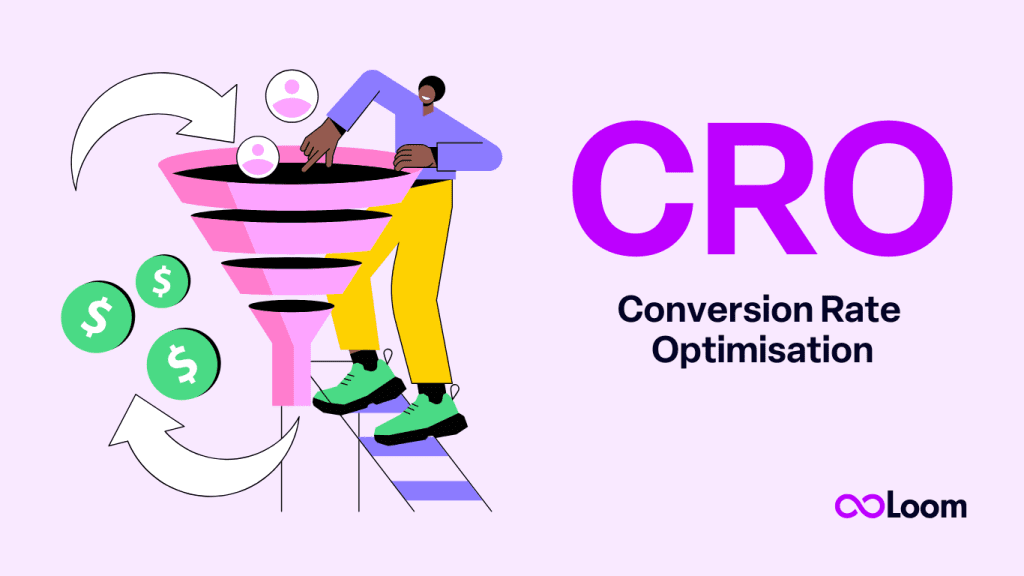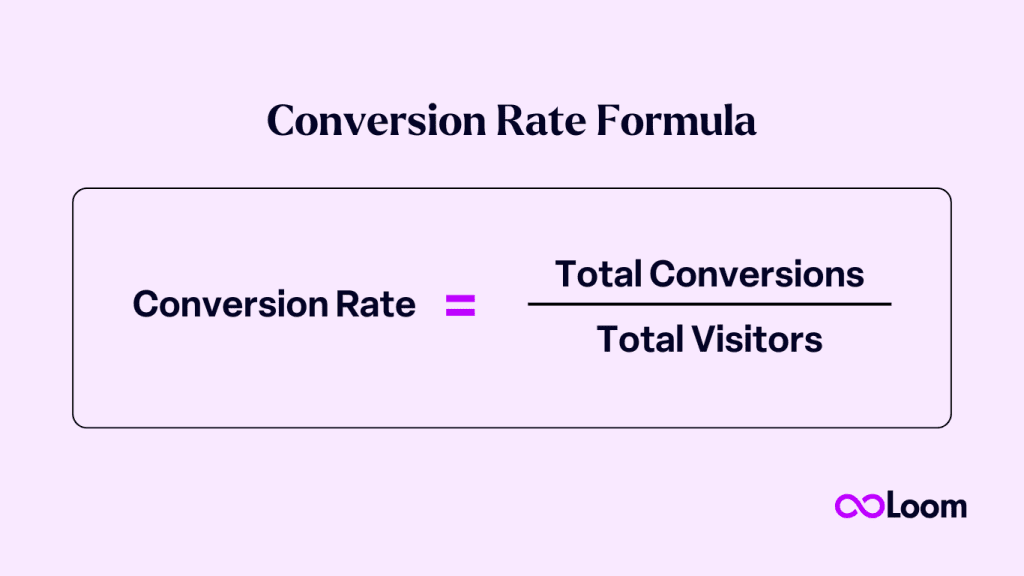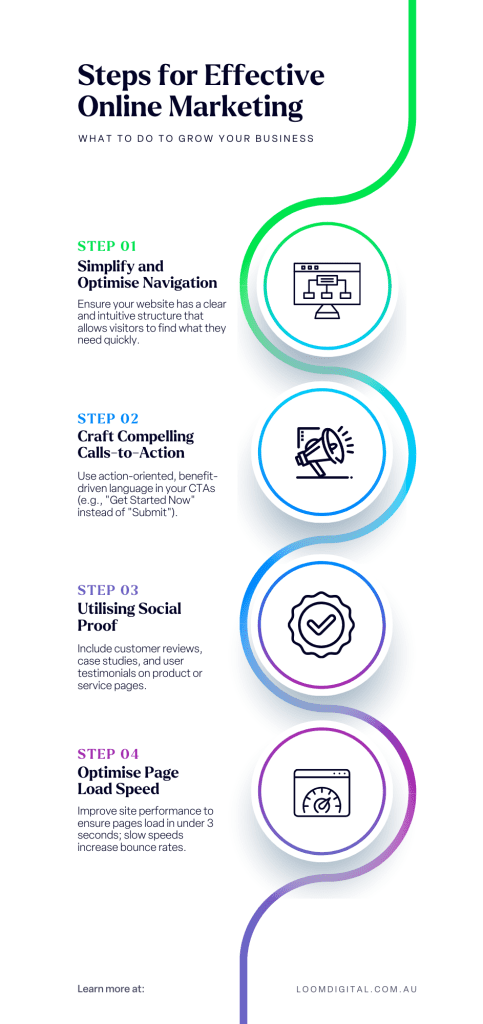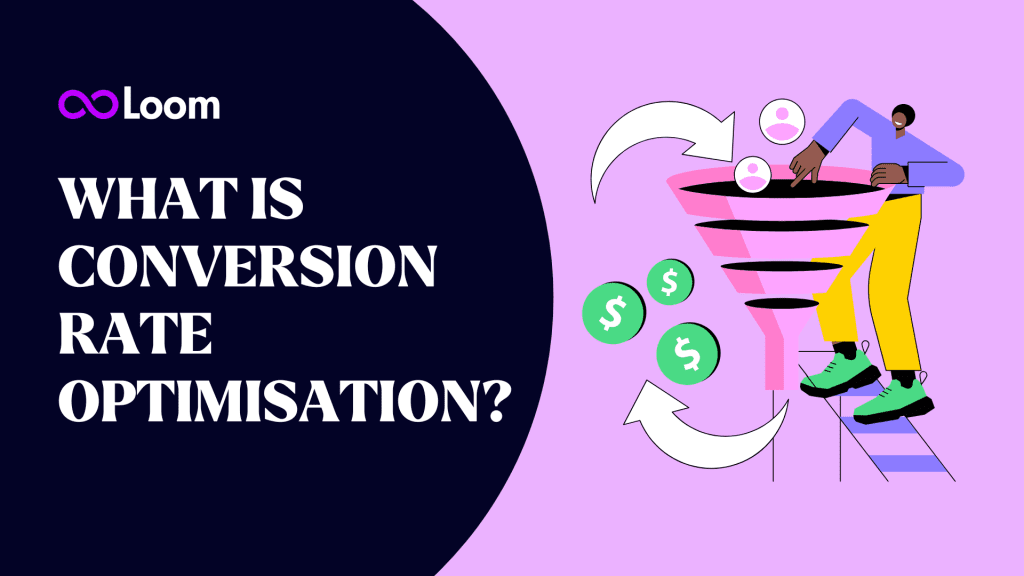Conversion Rate Optimisation (CRO) is about making changes to your website to increase the percentage of visitors who take a specific action, such as buying a product or signing up for a newsletter. This article explains what is conversion rate optimisation, why it’s important, and how you can use it to improve your site’s performance.
Key Takeaways
- Conversion Rate Optimisation (CRO) involves analysing user interactions on websites to improve conversion rates, focusing on existing traffic rather than merely attracting new visitors.
- Key metrics such as bounce rate, click-through rate, and cart abandonment rate are essential for understanding user behavior and optimising the website for higher conversions.
- Strategies like Simplify and Optimise Navigation, Craft Compelling Calls-to-Action, and Utilise Social Proof are integral components of a successful conversion rate optimisation process.
Understanding Conversion Rate Optimisation (CRO)

Conversion rate optimisation (CRO) focuses on enhancing a website’s efficacy in converting visitors into customers. At its core, CRO involves analyzing how users interact with your site to identify improvements that can elevate conversion rates. This research-driven approach helps businesses streamline their marketing spend and target users more likely to convert, ultimately boosting sales and acquiring more leads through the conversion rate optimisation process and conversion rate optimisation cro.
Effective conversion rate optimisation requires a deep understanding of your target audience. Analysing user behavior, identifying pain points, and testing strategies help businesses create a seamless, enjoyable experience that drives conversions through the conversion funnel. This not only increases sales but also enhances overall online success through conversion optimisation.
Tracking conversion rates is essential for effective resource management in digital marketing strategy. Knowing which strategies work allows you to focus your time, budget, and resources on the most effective marketing tactics, ensuring you get the most value from your existing user base. This is especially critical in ecommerce marketing, where getting more visitors to act on the desired calls to action can make a significant difference.
In summary, CRO is not just about attracting new traffic. It’s about making the most of the traffic you already have, ensuring every visitor has the best possible chance of converting into a customer. This approach not only boosts sales but also creates a more efficient and effective marketing strategy.
How to Calculate Your Site’s Conversion Rate

Understanding how to calculate your site’s conversion rate is fundamental to effective conversion rate optimisation. The conversion rate reflects the percentage of users who undertake a chosen action, such as making a purchase or signing up for a newsletter. The formula for calculating this is straightforward: (Number of conversions / Total visitors) * 100.
For example, if your website has 1,000 website visitors and 50 of them make a purchase, your average conversion rate would be calculated as (50/1000) * 100 = 5%. This simple calculation can provide deep insights into your website’s performance and highlight areas that need improvement.
Tracking and understanding your site’s conversion rate helps in optimising marketing efforts and improving overall user experience. Tools like Google Analytics can be invaluable in this process, providing detailed insights into user behavior and conversion metrics. By analysing this data, you can identify which pages or actions are underperforming and take steps to improve them.
In essence, calculating your conversion rate is about more than just numbers. It’s about understanding how effectively your website converts visitors and using that information to make informed decisions that drive more conversions and improve your bottom line.
Key Metrics for Effective Conversion Rate Optimisation
To achieve effective conversion rate optimisation, tracking key metrics is essential. These metrics include bounce rate, click-through rate, conversion rate, and cart abandonment rate. Each of these provides valuable insights into how users interact with your website and where potential issues may arise.
High bounce rates often indicate friction points on a website, which can hinder conversion. For instance, 85% of mobile shoppers typically abandon their carts, highlighting a crucial area for improvement in the user experience. Understanding these metrics allows you to pinpoint where users are dropping off and take corrective action.
Tools like Adobe Analytics and Heap are particularly useful for tracking these metrics. Adobe Analytics provides insights into user flow and conversion metrics across multiple channels, while Heap offers detailed metrics on user interactions, capturing data on page views, sessions, and form submissions. These tools help in building a comprehensive view of your site’s performance and identifying areas for improvement.
Regular measurement of key performance indicators is vital for optimising user experience and improving conversion rates over time. By continuously analysing these metrics, you can refine your strategies and ensure that your website is always performing at its best.
Strategies to Boost Conversions on Your Website

Boosting conversions on your website involves implementing a variety of strategies tailored to your specific audience and goals. One effective approach is using user feedback surveys to gather qualitative data on user satisfaction and pain points. This information can inform further optimisation efforts and help create a more user-centric website.
Personalised marketing content can also significantly drive higher engagement and conversions. Tailoring your messages to the specific needs and interests of your audience showcases the importance of personalised approaches in CRO. Tracking key metrics like Customer Acquisition Costs (CAC) and Average Order Value (AOV) can further enhance your overall conversion strategies by providing insights into the cost-effectiveness of your marketing efforts.
Implementing simple navigation, crafting compelling call to actions, utilising social proof and optimising page load speed are four powerful strategies that can substantially boost conversions. Each of these will be discussed in detail in the following subsections.
Simplify and Optimise Navigation
Streamlining your website’s navigation is crucial for guiding users effortlessly to their desired information, which directly impacts conversion rates. Ensure that your navigation menu is clear, concise, and intuitive, allowing visitors to find what they need with minimal clicks. By organising content logically and using straightforward labels, you can reduce user frustration and improve their overall experience.
It’s essential to prioritise important pages and limit the number of options in your navigation bar to avoid overwhelming users. Implementing a search function can also aid visitors in locating specific content quickly. By optimising navigation, you enhance usability, leading to a more satisfying user journey and ultimately boosting conversions.
Craft Compelling Calls-to-Action
Creating compelling calls-to-action (CTAs) is crucial for driving conversions and guiding visitors toward taking desired actions on your website. A well-crafted CTA can make the difference between a casual visitor and a committed customer. Here are some strategies to enhance your CTAs:
- Use Action-Oriented Language: Employ strong verbs that encourage immediate action. Phrases like “Get Started”, “Join Now”, or “Discover More” can create a sense of urgency and prompt users to act.
- Highlight the Benefits: Clearly communicate the value or benefit that users will gain by clicking your CTA. For example, “Unlock Exclusive Discounts” or “Access Free Resources” makes it clear what visitors will receive.
- Make It Stand Out: Design your CTAs to be visually distinct from other elements on the page. Use contrasting colors, bold fonts, and strategic placement to draw attention.
- Create a Sense of Urgency: Incorporate time-sensitive language, such as “Limited Time Offer” or “Only a Few Spots Left”, to encourage users to act quickly and not miss out.
- Personalise Your CTAs: Tailor your CTAs to resonate with your specific audience. Use language and offers that speak directly to their needs and preferences.
- Test and Optimise: Continuously test different CTA variations using A/B testing to determine which ones yield the highest conversion rates. Analyse the results and refine your CTAs based on user behavior and feedback.
By implementing these strategies, you can craft CTAs that effectively guide your website visitors through the conversion funnel, ultimately boosting your site’s conversion rate and achieving your marketing goals.
Utilising Social Proof
Social proof is a powerful tool for increasing conversions. Research indicates that social proof can boost conversion rates by 3% to 37% depending on the number of reviews presented. Displaying customer reviews significantly elevates user trust and positively impacts conversion rates.
Positive reviews act as trusted recommendations, increasing their appeal to potential customers. Incorporating authentic testimonials enhances credibility and trust in your offerings. Social proof, including customer reviews and testimonials, plays a crucial role in establishing trust and can lead to higher conversion rates.
Optimising Page Load Speed for Better Conversions
Page load speed is a critical factor in conversion rate optimisation as it directly impacts user experience and engagement. Slow-loading pages can lead to higher bounce rates, which negatively affect your conversion rates. To optimise page load speed, consider the following strategies:
- Compress Images: Large images can significantly slow down your website. Use compression tools to reduce image sizes without compromising quality, ensuring faster load times.
- Leverage Browser Caching: Enable browser caching to store static resources on users’ devices, reducing the need to reload them on subsequent visits and improving load times.
- Minimise HTTP Requests: Reduce the number of elements on your page that require HTTP requests, such as scripts, images, and stylesheets, to enhance loading speed.
- Use a Content Delivery Network (CDN): A CDN can distribute your website’s content across multiple servers worldwide, reducing the distance data travels and speeding up load times for users everywhere.
- Optimise Code: Minify CSS, JavaScript, and HTML files to eliminate unnecessary characters and whitespace, improving the efficiency and speed of your website’s code.
- Prioritise Above-the-Fold Content: Ensure that content appearing above the fold loads first, allowing users to interact with your site while the rest of the page continues to load.
- Enable Lazy Loading: Implement lazy loading for images and videos, so they only load when they come into the user’s view, reducing initial page load time.
By focusing on these strategies, you can significantly improve your website’s page load speed, leading to a better user experience, lower bounce rates, and ultimately, higher conversion rates. Optimising load speed is an essential component of an effective conversion rate optimisation process, ensuring your website performs at its best for all visitors.
Optimising Landing Pages for Higher Conversions
Optimising landing pages is essential for higher conversions. Keeping copy concise and clear makes it easy for visitors to understand your value proposition. Aligning the message of your landing page with the ads ensures that visitor expectations are met.
Displaying products or services in real-life contexts helps visitors envision themselves as customers. Essential elements like headlines and CTAs should be positioned above the fold for better visibility. Using visual indicators to guide visitors’ eyes toward important areas, especially CTAs, can significantly boost conversions.
Removing unnecessary navigation maintains focus on a single conversion goal, while responsive design ensures compatibility and ease of use on mobile devices. Using templates can streamline the design process while maintaining a professional appearance.
Leveraging Behavioral Analytics
Behavioral analytics is essential for understanding user interactions with your website. Using analytics tools provides a comprehensive overview of key performance indicators and helps identify user behavior patterns affecting conversions. Tools such as Google Analytics, heatmap software, and session recording tools are invaluable for gaining insights into how users engage with website elements.
By leveraging insights gathered from behavioral analytics tools, businesses can refine their CRO strategies, ensuring improved user experiences and higher conversion rates. Continuous monitoring and refinement of these strategies are crucial for maintaining and enhancing website performance.
Importance of Mobile-Friendly Design

Mobile optimisation is essential today due to the growing number of users accessing websites via smartphones and tablets. Search engine optimisation prioritises mobile-friendly sites, leading to improved visibility and organic traffic. A seamless mobile experience can significantly lower bounce rates and enhance the likelihood of conversions.
Prioritising content for mobile users makes important information easily accessible and encourages engagement. Responsive design ensures web pages function well across various devices, aiding in consistent user experience. Optimising load times by compressing images can help retain mobile users, who expect fast access.
Simplifying navigation on mobile ensures users can easily access important links and call-to-action buttons. Ensuring landing pages load quickly is crucial, as slow speeds can deter potential customers. It is vital to have a mobile-friendly design to build trust and enhance user experience.
Continuous Improvement Through CRO
Continuous conversion rate optimisation is vital as it adapts to changing consumer behavior, leverages new technologies, and keeps businesses ahead of competitors. CRO is an ongoing process with no true endpoint, requiring repeated efforts to maintain effectiveness. Regular measurement and iteration are essential for ensuring the effectiveness of conversion rate optimisation strategies.
Continuous A/B testing helps discover what works best for a specific audience and enhances overall conversion effectiveness. Understanding consumer preferences and behaviors that can shift rapidly is crucial to meet evolving needs in the CRO process.
Investing in CRO processes generally leads to improved conversion rates and stronger connections with customers. Using the PIE framework allows businesses to prioritise CRO efforts by ranking Potential, Importance, and ease, ensuring effective resource allocation.
Summary
In summary, Conversion Rate Optimisation (CRO) is a multifaceted process that involves enhancing various aspects of your website to convert visitors into customers effectively. By understanding the fundamental principles of CRO, calculating and tracking your site’s conversion rates, and focusing on key metrics, you can make informed decisions that drive more conversions.
Implementing strategies such as A/B testing, enhancing user experience, and utilising social proof can significantly boost your website’s performance. Optimising landing pages, leveraging behavioral analytics, and ensuring a mobile-friendly design are crucial steps in creating a seamless user experience that encourages conversions.
Continuous improvement through CRO is essential for adapting to changing consumer behaviors and staying ahead of competitors. By regularly measuring and iterating on your CRO strategies, you can maintain and enhance your website’s performance, ultimately leading to increased sales, leads, and overall online success. Embrace these strategies and watch your conversion rates soar, transforming your business into a digital powerhouse.
Frequently Asked Questions
What is Conversion Rate Optimisation (CRO)?
Conversion Rate Optimisation (CRO) is essential for improving a website’s ability to turn visitors into customers through data-driven analysis and enhancements. By understanding user behavior, you can implement strategic changes that boost conversions.
How do you calculate a conversion rate?
To calculate a conversion rate, use the formula: (Number of conversions / Total visitors) * 100. For instance, if you have 1,000 visitors and 50 conversions, your conversion rate is 5%.
What are some key metrics to track for effective CRO?
To ensure effective conversion rate optimisation (CRO), focus on tracking bounce rate, click-through rate, conversion rate, and cart abandonment rate, as they reveal vital insights into user behavior and improvement opportunities.
How does A/B testing help in CRO?
A/B testing is crucial in CRO as it allows you to compare two versions of a webpage to identify which elements drive higher conversion rates. This data-driven approach helps optimise your site for improved performance and increased conversions.
Why is mobile-friendly design important for CRO?
Mobile-friendly design is essential for CRO because it caters to the growing volume of users on mobile devices, providing a smooth experience that reduces bounce rates and increases conversion rates. Ensuring your site is optimised for mobile can significantly boost your overall performance.
